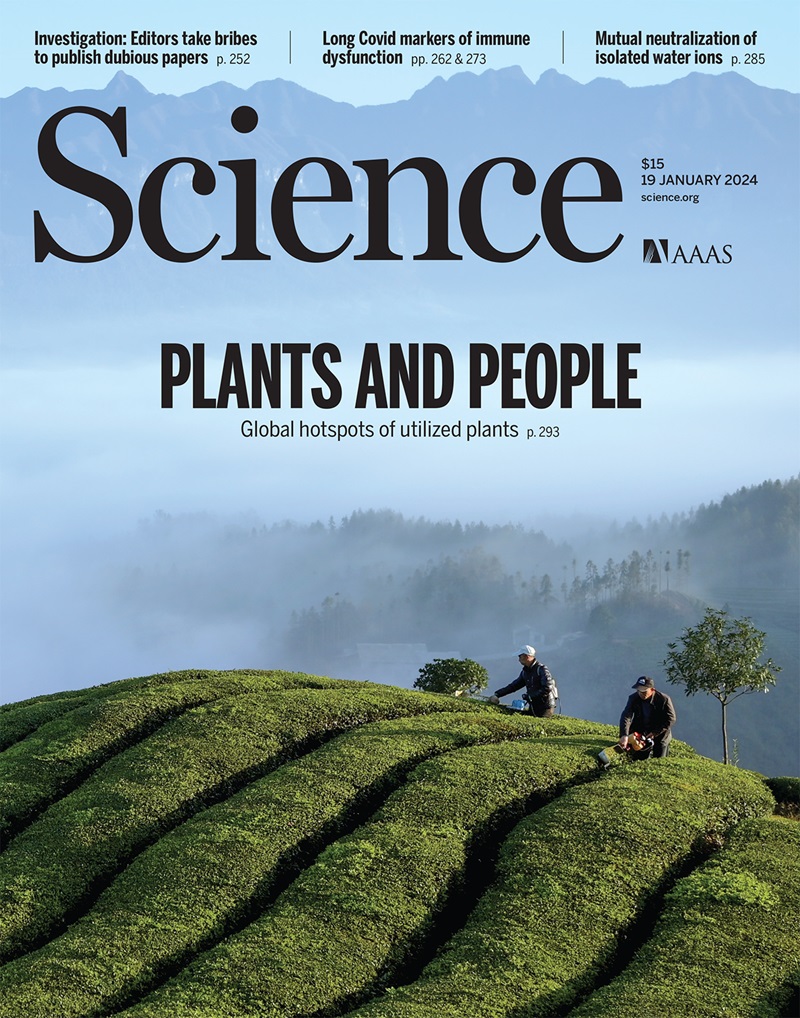Ultrafast aqueous electric double layer dynamics
IF 44.7
1区 综合性期刊
Q1 MULTIDISCIPLINARY SCIENCES
引用次数: 0
Abstract
The electric double layer (EDL) is critical in electrochemical capacitors and transistors, on-water chemistry, and bioelectric technologies. Ion dynamics within the EDL define the limits for charging and discharging processes. Classical EDL models struggle at high electrolyte concentrations, and observing EDL dynamics has been challenging. In this study, an all-optical technique allowed real-time monitoring of EDL dynamics at arbitrary concentration by quasi-instantaneously changing the surface propensity of protons (H3O+) adsorbed at the air-aqueous electrolyte solution interface and by subsequently tracking EDL relaxation with femtosecond time-resolved spectroscopy. EDL reorganization occurred on picosecond timescales and was strongly concentration dependent. Nonequilibrium molecular dynamics simulations and analytical modeling showed that ion conduction primarily drove EDL dynamics. This research quantified EDL dynamics and identified its primary driver, providing insights for optimization of electrochemical applications.
超快双水电层动力学
双电层(EDL)在电化学电容器和晶体管、水化学和生物电技术中至关重要。EDL内的离子动力学定义了充电和放电过程的限制。经典的EDL模型在高电解质浓度下存在问题,并且观察EDL动力学具有挑战性。在这项研究中,通过准瞬时改变吸附在空气-水电解质溶液界面上的质子(h3o +)的表面倾向,以及随后用飞秒时间分辨光谱跟踪EDL弛豫,全光技术允许在任意浓度下实时监测EDL动力学。EDL重组发生在皮秒级时间尺度上,且高度依赖于浓度。非平衡态分子动力学模拟和分析模型表明,离子传导主要驱动EDL动力学。该研究量化了EDL动力学并确定了其主要驱动因素,为优化电化学应用提供了见解。
本文章由计算机程序翻译,如有差异,请以英文原文为准。
求助全文
约1分钟内获得全文
求助全文
来源期刊

Science
综合性期刊-综合性期刊
CiteScore
61.10
自引率
0.90%
发文量
0
审稿时长
2.1 months
期刊介绍:
Science is a leading outlet for scientific news, commentary, and cutting-edge research. Through its print and online incarnations, Science reaches an estimated worldwide readership of more than one million. Science’s authorship is global too, and its articles consistently rank among the world's most cited research.
Science serves as a forum for discussion of important issues related to the advancement of science by publishing material on which a consensus has been reached as well as including the presentation of minority or conflicting points of view. Accordingly, all articles published in Science—including editorials, news and comment, and book reviews—are signed and reflect the individual views of the authors and not official points of view adopted by AAAS or the institutions with which the authors are affiliated.
Science seeks to publish those papers that are most influential in their fields or across fields and that will significantly advance scientific understanding. Selected papers should present novel and broadly important data, syntheses, or concepts. They should merit recognition by the wider scientific community and general public provided by publication in Science, beyond that provided by specialty journals. Science welcomes submissions from all fields of science and from any source. The editors are committed to the prompt evaluation and publication of submitted papers while upholding high standards that support reproducibility of published research. Science is published weekly; selected papers are published online ahead of print.
 求助内容:
求助内容: 应助结果提醒方式:
应助结果提醒方式:


